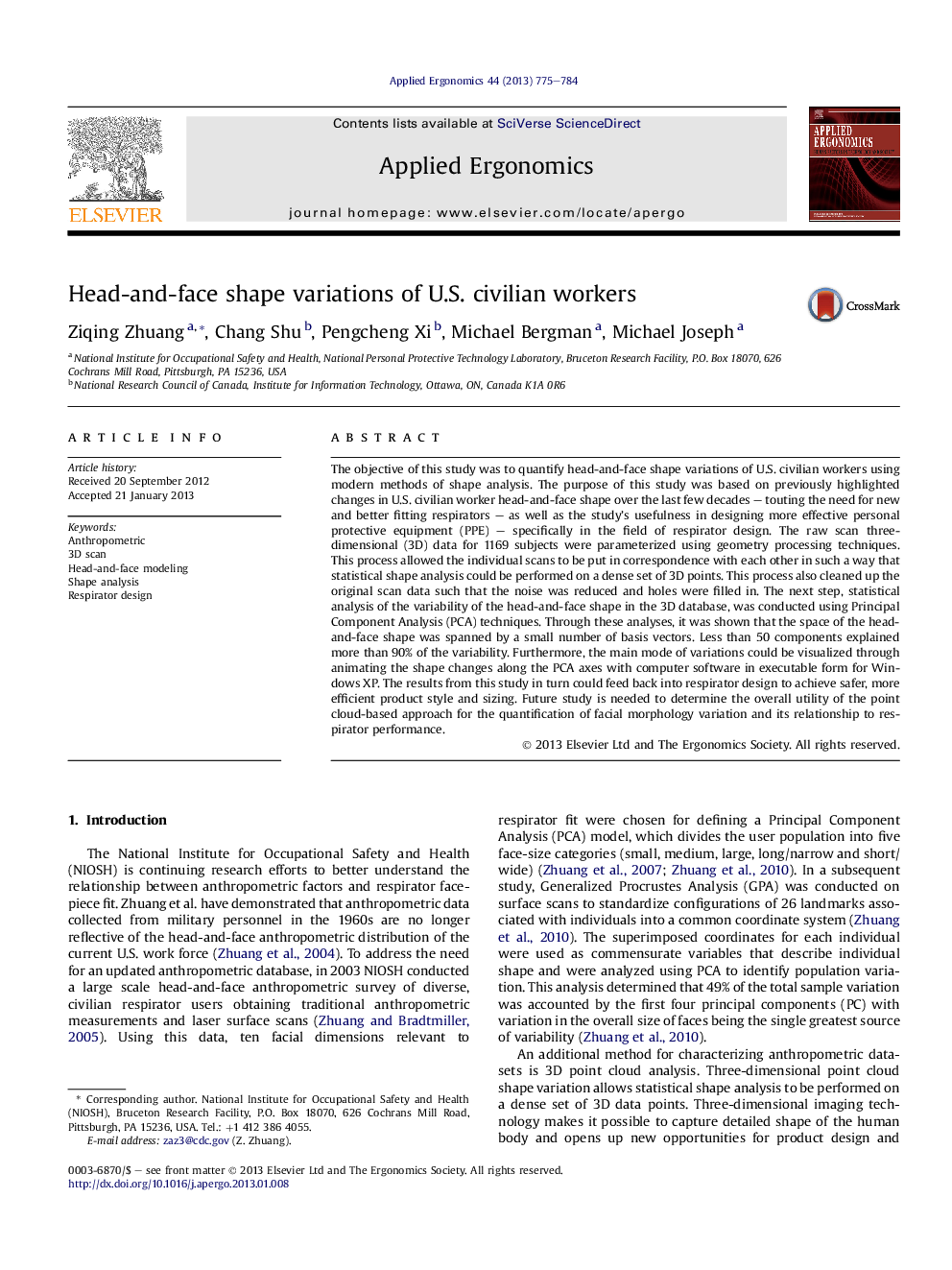| کد مقاله | کد نشریه | سال انتشار | مقاله انگلیسی | نسخه تمام متن |
|---|---|---|---|---|
| 549336 | 872361 | 2013 | 10 صفحه PDF | دانلود رایگان |

The objective of this study was to quantify head-and-face shape variations of U.S. civilian workers using modern methods of shape analysis. The purpose of this study was based on previously highlighted changes in U.S. civilian worker head-and-face shape over the last few decades – touting the need for new and better fitting respirators – as well as the study's usefulness in designing more effective personal protective equipment (PPE) – specifically in the field of respirator design. The raw scan three-dimensional (3D) data for 1169 subjects were parameterized using geometry processing techniques. This process allowed the individual scans to be put in correspondence with each other in such a way that statistical shape analysis could be performed on a dense set of 3D points. This process also cleaned up the original scan data such that the noise was reduced and holes were filled in. The next step, statistical analysis of the variability of the head-and-face shape in the 3D database, was conducted using Principal Component Analysis (PCA) techniques. Through these analyses, it was shown that the space of the head-and-face shape was spanned by a small number of basis vectors. Less than 50 components explained more than 90% of the variability. Furthermore, the main mode of variations could be visualized through animating the shape changes along the PCA axes with computer software in executable form for Windows XP. The results from this study in turn could feed back into respirator design to achieve safer, more efficient product style and sizing. Future study is needed to determine the overall utility of the point cloud-based approach for the quantification of facial morphology variation and its relationship to respirator performance.
► The first 33 PCs account for more than 90% of face-shape variation.
► The space of the head-and-face shape is spanned by a small number of basis vectors.
► 3D images can be used to further respirator design, achieving safer product styles and sizing.
► Point cloud analysis of 3D head scan data can reveal detailed shape variation among populations.
► New Shape Analyzer Software with ability to create virtually any head-and-face size and shape.
Journal: Applied Ergonomics - Volume 44, Issue 5, September 2013, Pages 775–784